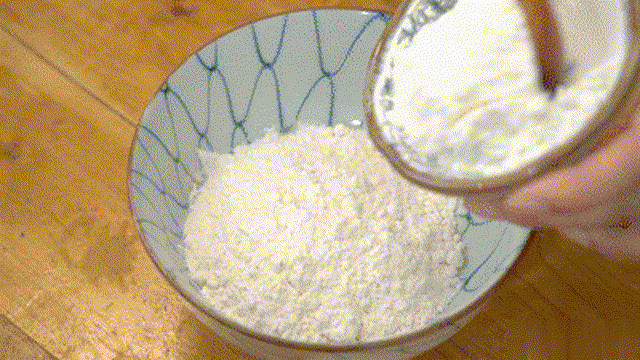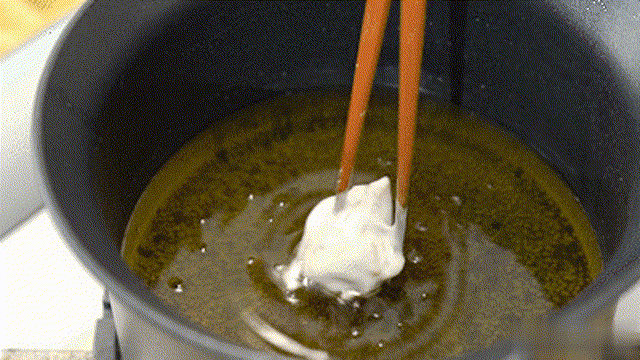Oubliez les calories aujourd’hui ! Parfois, tout ce dont vous avez besoin, c’est d’une collation croustillante, juteuse et pleine de saveur pour vous remonter le moral. Découvrez le poulet frit à la sauce thaï sweet chili, un plat si délicieux que son simple évocation vous mettra l’eau à la bouche. Les saveurs audacieuses et aromatiques de la cuisine thaïlandaise, avec son équilibre caractéristique de sucré, d’épicé et de piquant, en font une indulgence parfaite.

Le secret d’un poulet frit parfaitement croustillant et juteux
Obtenir cette croûte dorée et croustillante tout en gardant l’intérieur tendre et juteux n’est pas magique – c’est une question de technique ! Voici deux astuces clés :
- La marinade est cruciale – Le poulet est infusé dans une riche marinade à base de sauce de poisson, de cassonade et de blancs d’œufs. Cela rehausse non seulement la saveur mais garantit aussi une viande incroyablement tendre.
- La pâte ultime – Un mélange spécial de farine à gâteau, fécule et poudre à lever crée une croûte aérienne et croustillante qui rend chaque bouchée satisfaisante.

Préparation étape par étape
Ingrédients
Pour la marinade du poulet :
- 400 g de cuisses de poulet désossées
- 1 blanc d’œuf
- 1 c. à soupe d’ail haché
- 1 c. à café de sauce de poisson
- 1/2 c. à café de poivre blanc
- 1 c. à soupe de cassonade
- 1/2 c. à café de sel
- 1 c. à soupe de fécule de maïs
Pour la pâte croustillante :
- 100 g de farine à gâteau
- 100 g de fécule de patate douce
- 1/2 c. à café de poudre à lever
Pour la sauce sweet chili :
- 2 c. à soupe de sauce sweet chili thaï
- 1-2 piments frais (hachés)
- 1 c. à soupe d’ail haché
- 1 c. à café de sucre
- 1 c. à café de jus de citron vert
- Zeste d’1/2 citron vert
- 3 c. à soupe d’eau
- Échalotes frites & coriandre hachée pour garniture
Mesures :
- 1 c. à soupe = 15 ml
- 1 c. à café = 5 ml

Instructions
1. Mariner le poulet
- Coupez les cuisses de poulet désossées en morceaux de la taille d’une bouchée.
- Mélangez-les avec l’ail haché, la sauce de poisson, le poivre blanc, la cassonade et le sel.
- Ajoutez un blanc d’œuf et la fécule de maïs, en veillant à un enrobage uniforme.
- Laissez mariner pendant au moins 30 minutes (toute la nuit pour plus de saveur !).

2. Préparer la sauce sweet chili
- Faites chauffer une poêle et faites revenir l’ail haché et les piments tranchés.
- Éteignez le feu avant d’ajouter la sauce sweet chili thaï, le sucre, le jus de citron vert, le zeste de citron vert et l’eau.
- Remuez bien et portez à nouveau à ébullition jusqu’à ce que la sauce épaississe.


3. Préparer la pâte croustillante
- Mélangez la farine à gâteau, la fécule de patate douce et la poudre à lever.
- Ajoutez un peu d’eau pour former une pâte épaisse et lisse.
- Enrobez le poulet mariné uniformément avec la pâte.

4. Frire le poulet
- Chauffez l’huile à feu moyen-élevé (environ 180°C).
- Faites frire le poulet jusqu’à ce qu’il soit doré clair et ferme.
- Retirez et égouttez, puis augmentez la température de l’huile à 200°C.
- Double friture pour un croustillant supplémentaire jusqu’à coloration dorée.


5. Enrober de sauce & servir
- Mélangez le poulet croustillant avec la sauce sweet chili maison.
- Parsemez d’échalotes frites et de coriandre fraîche.
- Servez chaud et régalez-vous !

L’explosion ultime de saveurs
Une seule bouchée de ce chef-d’œuvre et vous serez accro – le croustillant, la tendreté juteuse, le piquant sucré-épicé, le tout équilibré par une touche de fraîcheur citronnée. C’est de la joie culinaire pure à chaque bouchée !
Si vous ne pouvez pas tout finir, pas de souci ! Conservez les restes dans un contenant, ils seront toujours délicieux le lendemain.
Astuce pro : l’accompagnement idéal !
Après ce festin, sirotez une tasse de thé d’orge pour nettoyer votre palais et rafraîchir vos sens. Cette combinaison change la donne !



















